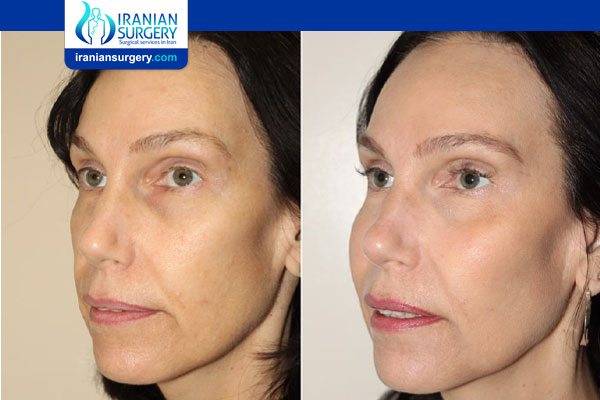How is Cheek Implant Performed?
During Cheek Implant Procedure
In cheek implants, your doctor will discuss cheek implant materials with you. Typically, patients choose either solid silicone (the most popular option), Gore-Tex®, or Medpor implants, a decision that will depend on your preferences and your doctor’s recommendations. Your doctor will also help you decide where to make the incision location, either beneath the eyelid or inside the mouth.
To begin the surgery, your doctor will carefully draw lines along your cheeks to determine proper placement for the implants. You’ll then be sedated with either local or general anesthesia, or a combination of the two, and surgery will begin with the incision technique agreed upon before the start of the surgery. Through this incision, the doctor will slip the implant into a pocket of facial tissue, which will hold the implant in place in two areas: the outer upper cheek (malar implants) and the lower or mid-cheek areas (submalar implants). Once the implants are in place, your surgeon will close the incision with sutures and cover the area with compression bandages.
Read more about : What are Facial Implants Made of?
Types of Cheek Implants
There are three types of cheek implants that you should know about:
. Submalar Implants
The submalar is located just beneath the lower eye line at the very point where the cheekbone begins. Around your early to mid-40s, you might begin to notice volume depletion in this region as your fat cells begin to descend down toward your lower cheek and chin area. This results in the cheeks looking sunken in and the bottom of the face developing jowls over time. Submalar implants are an easy and affordable solution to this problem as they’re placed directly above where the cheekbones begin.
Read more about : Do cheek implants last forever?
. Malar Implants
The malar region is just below the submalar area. It’s basically where your cheekbone sits. Malar implants are less common than submalar implants and they’re more commonly requested by younger patients in their 20s and 30s. The purpose of malar implants is to create a sharper, more angular shape that results in a strong and more defined bone structure.
. Combination
Although it’s uncommon, some patients might opt to have both procedures performed at once if they feel that their cheekbones aren’t well defined, and they’ve lost volume in their midface area. Combining both procedures essentially allows patients to have the best


